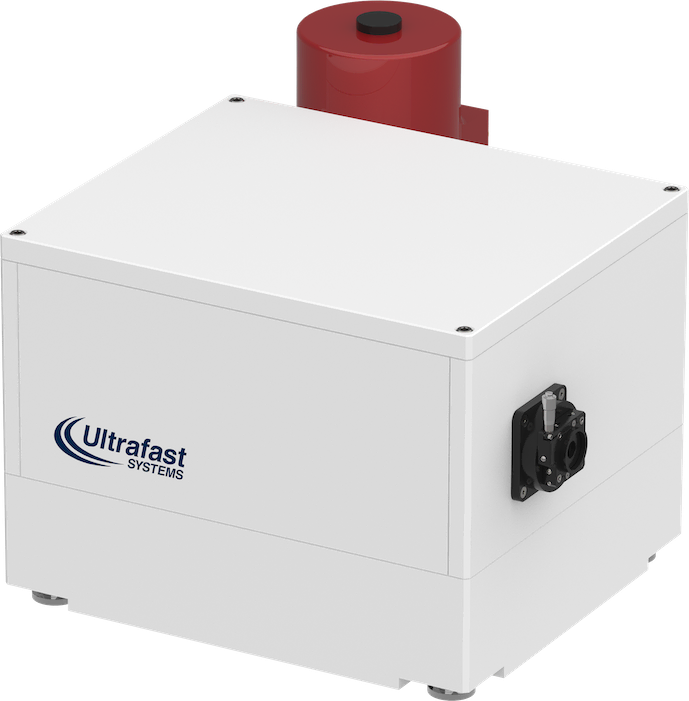
Typically 2-13 µm. Extendable to 20 µm.
In Helios IR we use our proprietary design imaging monochromator, which is optimized to match the rest of the spectrometer optics. With its four-grating turret and variable slits, you can easily control the detection bandwidth and spectral resolution. Which is perfect for working with multipixel MCT arrays.

Typically Used Gratings
Spectral Range
6-16 µm
3-10 µm
2-7 µm
Groove Density, g/mm
50
75
150
Blaze Wavelength
9 µm
4.65 µm
3 µm
Linear Dispersion, nm/mm
63.6
42.4
21.3
Mechanical Resolution, nm
3.8
2.5
1.3
Minimum Step Size, nm
1.7
1.2
0.57
The nanosecond window is achieved by using a direct-drive high-speed optical delay line. Custom-designed mounts are employed for the delay line optics to increase the beam alignment reproducibility and overall reliability. This delay line features high resolution as well as high speed. Scanning at high speeds is very important because it allows for pseudo-random stepping without significantly increasing the experiment time. This type of stepping is very useful for minimizing the effects of laser instability and sample degradation.
The standard 8 ns time window extendable to milliseconds with the EOS add-on.
Time window: 8 ns
Resolution: 14 fs
Minimum step size: 2.8 fs
Max. speed: >10 ns/s
Acceleration: > 260 ns/s2
Automated alignment time: 3-5 min
Beam pointing drift: <10 µm over 8 ns delay range
Helios-IR can be configured with various MCT detector options, including dual multi-pixel arrays.
Available MCT detector configurations:
Single-pixel elements
1×2 (two single-pixel detectors with probe reference)
Single-pixel elements
32 pixels
64 pixels
128 pixels
Dual multi-pixel arrays (with probe reference)
16 pixels x2
32 pixels x2
64 pixels x2

Single-pixel detector

Multi-pixel detector
The spacious sample compartment allows for easy mounting of various cryostats and temperature-controlled sample holders. Also, simply having more space around the sample makes working with your samples simpler.
The spacious sample compartment allows for easy mounting of various cryostats and temperature-controlled sample holders. Also, simply having more space around the sample makes working with your samples simpler.
Optical bench:
W34” x L56” x H14” (W864 x L1425 x H356 mm)
Electronics rack:
W21” x L24” x H27” (W534 x L610 x H686 mm)
HELIOS IR features versatile and user-friendly LabVIEW-based software for instrument control and data acquisition.
Automated alignment of the optical delay line.
Supports computer-controlled translating sample holder.
Supports pump beam shutter.
Supports motorized filter wheel for automated pump intensity control.
Saves every individual kinetic scan, so if the experiment is aborted (due to laser fluctuations, power outages, etc.) all previous scans are not lost.
Threshold adjusted automatic probe intensity spike rejection – an advanced setting that collects data points again if the probe is not stable.
Support for multiple choppers to facilitate customized experiments.
API (Application Programming Interface) for EOS IR is provided for further experiment customization and integration with external applications.
Helios IR can be used to monitor photoinduced species absorbing in the mid-infrared spectral region. For example, vibrationally excited states, charge carriers and electronically excited states in low band gap nanomaterials, etc.
Some research areas where HELIOS IR is useful are:
Photophysics
Materials science
Photochemistry
Nanoscience
Photobiology
Transient spectrometry
Cell biology
Many more areas
Helios IR can be used to monitor photoinduced species absorbing in the mid-infrared spectral region. For example, vibrationally excited states, charge carriers and electronically excited states in low band gap nanomaterials, etc.
This site is protected by reCAPTCHA and the Google Privacy Policy and Terms of Service apply.
© 2002 – 2024 Ultrafast Systems, 8330 Consumer Ct, Sarasota, FL 34240, USA. All Rights Reserved.
An answer to your question might already be there.